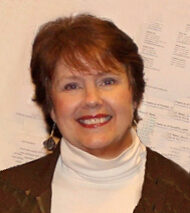
Nancy Huntting, Aesthetic Realism consultant, writes:
Why is poetry important to life—your life? And what distinguishes true poetry from non-poetry? You’ll never see the art of poetry or your own life the same way again after reading “Excitement and Calm—in Poetry and Us,” the surprising, vital new issue of The Right of Aesthetic Realism to Be Known.
The commentary by Ellen Reiss begins:
Dear Unknown Friends:
We continue our serialization of the great 1972 lecture We Approach Poetry Variously, by Eli Siegel. The question he is answering in it—answering magnificently, definitively—is this: Is there a difference that firmly exists, and can be stated, between a true poem and something that is arranged in lines but is not an authentic poem? Yes. And what that difference is, and why it matters vitally to everyone’s life, is described in this principle of Aesthetic Realism: “All beauty is a making one of opposites, and the making one of opposites is what we are going after in ourselves.”
In the present section, Mr. Siegel is speaking about the opposites of excitement and ease; that which stirs, rouses, and that which is calm, soothing. Poetry makes these one. And oh, how we need to see what that means. How we need to see that these opposites can be one, including in us, and that they are one in reality itself. We need to see this, because the way stir and soothing are in people’s lives is usually messy, confusing, even desolating.
This Is Happening Now
Every human being wants excitement and also quietude—but a person usually shuttles between the two. There is a tremendous desire for calm. And people have gone after calm in ever so many ways. They have lain on beaches for hours. They have sipped tea. They have knitted. They have taken naps.
Then, after a while, that quietude dissatisfies. They feel bored, stuck, and want some excitement. Yet the excitement people go after—whether through sex, or sports, or through spending money, or rappelling down cliffs, or beating out someone in a matter of career—usually comes with a deep letdown. As I’ll try to describe: that’s because the exciting activity, whether good or bad in itself, is usually not seen by the person in such a way as to make him or her truly composed. So again there comes to be a pervasive dissatisfaction.
How the opposites of stir and calm are in us is affected centrally by what Aesthetic Realism shows to be the large battle in the human self. This battle, writes Eli Siegel, “is the fight between respect for reality and contempt for reality” (TRO 151). The first, respect, is our deepest desire: we were born “to like the world through knowing it.” And quietude and excitement will make sense in our lives only if our purpose in both is to know and see meaning in the world. Then those opposites will not make for a shuttling within us. They will be friends—as a tumultuous passage in a Beethoven symphony is friendly to, at one with, a quiet, tender passage….Read more